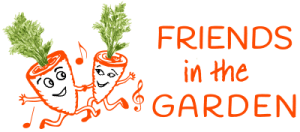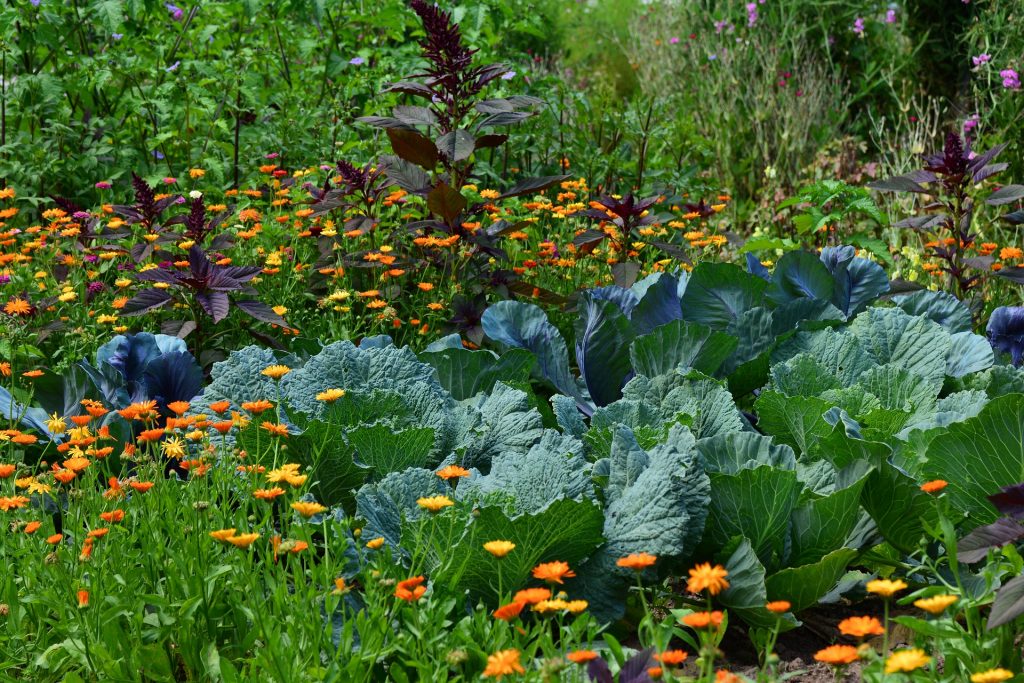
Don’t Google “companion planting” unless you have hours to spend reading contradictory information. It seems impossible to untangle which advice has a bearing in science and which advice is the result of an eons long gardening whisper game. Companion planting “knowledge” is often dispensed without any data and sometimes without any reasoning to back the claims. What we will do here is focus on companion planting strategies that have scientific backing, so that you can start using these techniques and getting results.
What is companion planting?
Companion planting is when you grow two or more plants together that are deemed to have a beneficial relationship. Companion planting enthusiasts recommend specific pairings to achieve the following results:
- increased yields/healthier plants
- less need for fertilizers and/or pesticides
- weed reduction/prevention
- improved flavor
- better soil health
The table below lists some commonly promoted planting relationships. After a brief historical view, we’ll get into each of these; taking a look at the science behind them or lack thereof, and outlining some specific pairings.
| PLANT A | PLANT B |
| 1 Fixes nitrogen into the soil | Heavy feeders get fed without depleting soil |
| 2 Gives off odors that repel harmful insects | Is saved from harmful insects |
| 3 Attracts harmful bugs | Is not a target and can live bug-free |
| 4 Attracts beneficial bugs | Gets natural pest control and thrives |
| 5 Improves flavor of Plant B | Plant B gets high self-esteem |
The Almost Science of Companion Planting
Are these claims science-based or folklore woo-woo? Companion planting has been used by gardeners for a very long time. It’s not new, but the re-emergence of companion planting grows as home and community gardening gains popularity. It’s challenging to find hard science data on some of the traditional companion planting assertions. Back in the 1950’s, research was conducted on some traditional companion plant pairings. The study looked at how different plant enzymes reacted to particular salt reagents. The process produced crystalline structures that were analyzed to determine plant compatibility. Plants having similar crystal patterns were regarded as compatible. Not quite a precise scientific method since it involved interpretation of the crystalline formations.
Some thirty years before those experiments, Dr. Rudolf Steiner proposed a new way of integrating science and nature spirituality. His philosophy and approach caught on with farmers and over time led to a farming method called “biodynamics”. Dr. Steiner’s approach was counter to the prevailing thought at the time that nature could be controlled through the widespread use of chemical pesticides and fertilizers. Better Living Through Chemistry! Dr. Steiner warned against the use of these agents and promoted a holistic approach that embraced plant, animal, earth, human and cosmic interplay as guidance towards optimal balance and health. Biodynamics evolved from Dr. Steiner’s early writings and lectures and is currently used on farms and in community gardens around the world.
The basic principle of companion planting – that it will give your garden the best results in terms of yield, soil health and natural pest management – is an evident outcome of the biodynamic approach. A gardener using biodynamics will consider the overall ecosystem of the garden and aspire to create a diverse system that balances itself. The gardener only intrudes when an imbalance is obviously not self-correcting. Even then, the gardener’s role is only to help the system rebalance itself. Biodiversity, interplanting, composting and allowing nature to do her thing, are principles of biodynamics that we’ll revisit as we look at the science behind common companion planting claims.
One of the hallmark strategies of biodynamic farming is the fermented compost preparations created from plants and other organic materials. Several studies conclude that the soil on biodynamic farms does have improved qualities such as increased nitrogen and potassium and is enriched with a natural earthworm and microbial population. In the spirit of biodynamics, you can achieve a soil upgrade in your home garden by planting legumes and using compost. So, let’s start there – with nitrogen fixing plants as companions to feeders.
Companion Planting – What is True?
Myth or Fact? Nitrogen “Fixing”
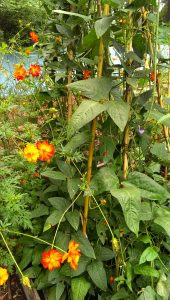
Beans are indeed a “magical fruit”, but not the way the ditty wants us to believe. Legumes are a high protein plant and high protein plants release a lot of nitrogen into the soil. Nitrogen accumulates during photosynthesis thanks to soil bacteria. But the majority of nitrogen isn’t released until the plant decomposes. If you plant heavy feeders (squash, cucumbers, melons, for example), next to nitrogen givers such as legumes, the feeders will get some nitrogen (with the help of the mycorrhizal fungal network living in the soil). But since most of the nitrogen won’t be released till later, it’s best to test your soil for nitrogen and if it needs it, use a good compost before planting heavy feeders. Once the legumes are finished growing, let them die then cut them up and leave them on the ground to release their nutrients. The following crop will benefit. You can also just rotate your crops; following givers with feeders. Companion planting doesn’t always mean the companions have to live together.
Squash: You’re not giving me what I need.
Legume: Be patient! I’m working on it, I promise! Just give me time.
Myth or Fact? Plant odors can repel harmful bugs
“Plant marigolds throughout the garden because harmful bugs are repelled by their odor” is pretty common companion planting advice. I’m guilty of dispensing that “knowledge”. Yikes. What’s the story behind it? Researchers at Newcastle University conducted a study and reported that marigolds effectively protect tomato plants from whiteflies by releasing limonene, which reportedly repels the harmful bug. It doesn’t appear that they tested whether the limonene masked tomato odors or actually repelled the whiteflies. Hmmm.
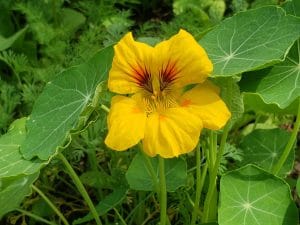
Some bugs use plant-emitted odors to find their host plants. So when a plant such as a marigold emits a strong odor, it can actually mask the scent of the target plant, sending the harmful bug off to look elsewhere. Planting basil with tomatoes is another oft repeated piece of classic companion planting wisdom. Studies establish that basil protects tomato plants against thrips. Thrips like lots of other veggies, too, so planting lots of basil isn’t a bad idea. Interplanting basil and marigolds with tomatoes produces good outcomes but none of the research I found reported the exact reason for the outcomes. Are the bugs being repelled? Masking is more likely but I can’t confirm that assertion.
Squash Bug Pro Tip – A controlled study showed that marigolds and nasturtiums appeared to be equally effective in providing protection against the squash bug.
Myth or Fact? Plants can attract harmful bugs
A plant that is a known target for a harmful bug can be planted in your garden as a “trap plant”. That is, it takes the hit to satisfy the harmful pest so other target plants won’t be bothered. This really works but you have to know whether the bug you are trying to trap is a mobile bug or one that won’t go far. You can plant the trap plant on the garden border or feet away from the crop you’re trying to save if the pest is mobile (squash bugs and cabbage looper moths). But for bugs that won’t go far (aphids, thrips, whiteflies and flea beetles), you’re better off interplanting the trap crop with the desired crop.
To trap squash bugs: Plant Blue Hubbard squash at the perimeter of your squash beds or several feet away. Squash bugs love Blue Hubbard squash and will go hang out there instead of on the squash you’re trying to protect. And still…plant some marigolds and nasturtiums!

To trap flea beetles: Flea beetles love to eat pak choi and radishes so interplant those with the susceptible crops such as cole plants (cabbage, broccoli, collards, kale) and nightshades (tomatoes, eggplant, peppers, potatoes).
NOTE: It’s recommended that you plant the trap plants a month before planting your protected plants, so they have time to grow and host the bugs.
These trap/protected plant combinations are suggested by Jessica Walliser in her book Plant Partners. I’m not affiliated or getting perks by recommending this book. I just want you to know about it because it’s an awesome resource on science-based companion planting.
Myth or Fact? Plants attract beneficial bugs
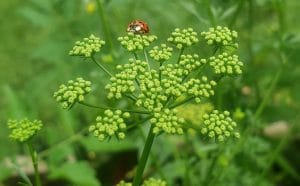
Plants can attract beneficial insects to your garden. Pollinators are number one on the “bugs you want to attract” list. If you are creating a diverse garden habitat then you’re definitely growing some flowers and flowering herbs that will bring valuable pollinators to your garden. Be sure to includeplants that will host insects like the syrphid fly. This wonderful bug will lay their eggs in your garden if you welcome them with a variety of flowers. Syrphid fly larvae eat loads of aphids so there’s yet another reason to interplant flowers and flowering herbs amongst your vegetables. Ladybugs are a well-known and loved beetle that bring benefit to the garden. They’re predators to many garden pests but best known for eating aphids. Those pesky aphids! Attract them to your garden with dill, parsley, yarrow, and cosmos. They love all kinds of flowers and herbs.
Myth of Fact? Companions can improve flavor
I found no research that reported on this companion planting claim. I invite you to consider, though, that fruit and vegetable plants thriving in a diverse and well-balanced ecosystem, have a wealth of nutrients, fewer pest issues and less competition for water. Wouldn’t that make them overall healthier and therefore better tasting? That’s another hypothesis for researchers to pursue.
I hope you have a better sense of how companion planting can create biodiversity and a thriving garden ecosystem. I hope you’ll try some of these combinations and observe what happens in your garden. And now that you know so much more about companion planting, you can explain some of these cause and effect relationships to your kids. It helps deepen their kinship with nature and makes planting more meaningful. Listening to the song Friends in the Garden with them is the perfect springboard for that conversation.
Thanks for reading! Happy Companion Planting,
XOXO Maria
PS – I’d love to hear what you got out of this article and anything about your companion planting experiences, so leave a comment, thanks!
